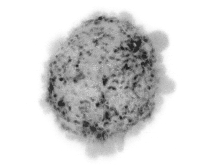Weems Lab
Department of Molecular Biosciences
University of Texas at Austin

Research Areas
As a lab, we are interested in the role cell morphology plays in signal transduction, and in understanding the ways cells manipulate their shapes as a means of altering signaling towards specific cell fates. Decades of study have revealed ornate control systems that allow cells to dynamically alter their shape in response to intrinsic and extrinsic stimuli, but far less thought and work has been committed towards discovering how these morphological changes in turn influence downstream signaling. Cell shape is clearly influenced by cell signaling, but how is cell signaling influenced by cell shape? And perhaps more importantly, what specific systems have evolved to regulate and make use of these causal relationships? We pursue questions centered around this theme by applying advanced subcellular resolution lightsheet microscopy, computer vision-aided analysis of quantitative 3D imaging, hypothesis-driven experimentation, and a commitment to building and maintaining long-term cross-disciplinary collaborations based on shared curiosity and mutual respect. Employing these approaches has led to the discovery of “bleb signaling”, an entirely novel signaling pathway necessary for cancer cell survival that is activated by specific cell surface topographies generated through the execution of an evolutionarily conserved morphological program.

Bleb Signaling in Cancer Disease Progression
Bleb signaling was first discovered in melanoma cells, which were shown to use the pathway to thrive in the absence of the kinds of attachment that most cells require for survival. Cells normally rely on such attachments to produce the chemical signals that keep them alive -- melanoma cells can bypass that necessity by activating bleb signaling upon detachment, effectively overcoming their need to be anchored within the body. This capability allows them to successfully spread to distant organs, causing metastasis.
Over time, we've found that this capability is not restricted to melanoma -- many cancers seem to use bleb signaling in the same way. We are continuing to explore the ramifications of this cellular behavior on how cancer systems develop within patients' bodies, and to apply what we learn towards the design of novel anti-cancer therapeutics.


Metabolic Regulation of Bleb Signaling
Blebbing activates pro-survival signaling in cancer cells by changing the shape of a cell's surface: the introduction of curvature serves as an activating signal to curvature-sensing septin proteins, which move to the edge of the cell and begin activating survival signaling once sufficient curvature is present. But we've found that curvature is not always enough to activate these signals. While septins normally respond to bleb-generated curvature, in some cells they are blind to changes in surface curvatures, regardless of how much blebbing occurs. This suggests that upstream signals are able to turn on and off septins' ability to sense curvature, effectively controlling the activation of this powerful source of pro-survival signals.
We've found that this on/off switch seems to be controlled by cellular metabolism, and are investigating the molecular mechanisms behind this phenomenon. Because our data suggest that this metabolic regulation of bleb signaling might be intertwined with the development of drug resistance in cancer cells, it is our hope that success in this work will not only result in new biological understanding, but also in new treatment strategies for patients.

Bleb Signaling in Cell Fate Determination
We are broadening our study of bleb signaling beyond its roles in cancer towards more fundamental questions of its function in other cell types. Our experiments have demonstrated that bleb signaling does not occur only in cancer cells, but also in normal mammalian cells, including human cells. It seems that much like other oncogenic pathways, bleb signaling does not represent a mode of survival that was hacked together de novo by cancer cells, but rather is the inappropriate activation of an evolutionarily conserved signaling pathway. So the question is: if keeping cancer cells alive represents inappropriate activation, then under what conditions is bleb signaling appropriately activated? What cellular functions did this pathway evolve to perform?
Septins are highly versatile protein scaffolds that organize and regulate diverse signaling pathways across multiple kingdoms of life. While our current findings support the hypothesis that bleb-associated septins specifically enable melanoma cell survival via the scaffolding of NRAS and downstream pathways, there is no reason to predict that other signaling pathways or cell behaviors do not follow the same paradigm. Similarly, dynamic blebbing does not occur only in amoeboid cancer cells but is also widely observed in many universal cellular processes including mitosis and apoptosis, as well as during key moments in stem cell fate determination. We are now working to understand what roles bleb signaling plays during these fundamental moments in cell physiology.